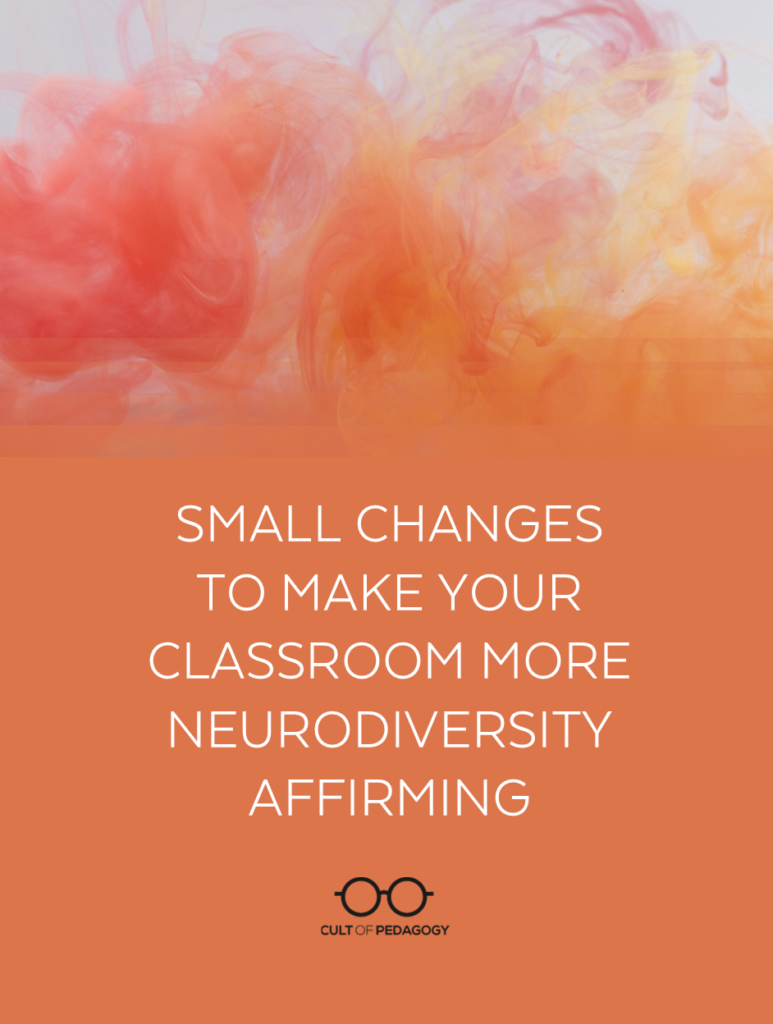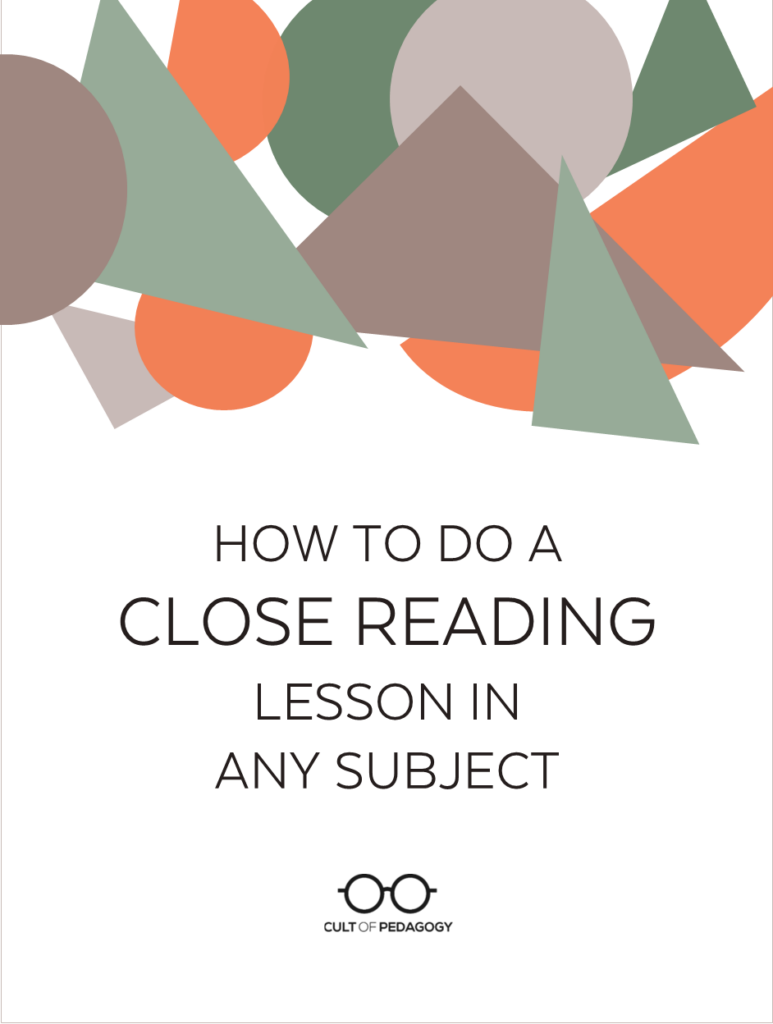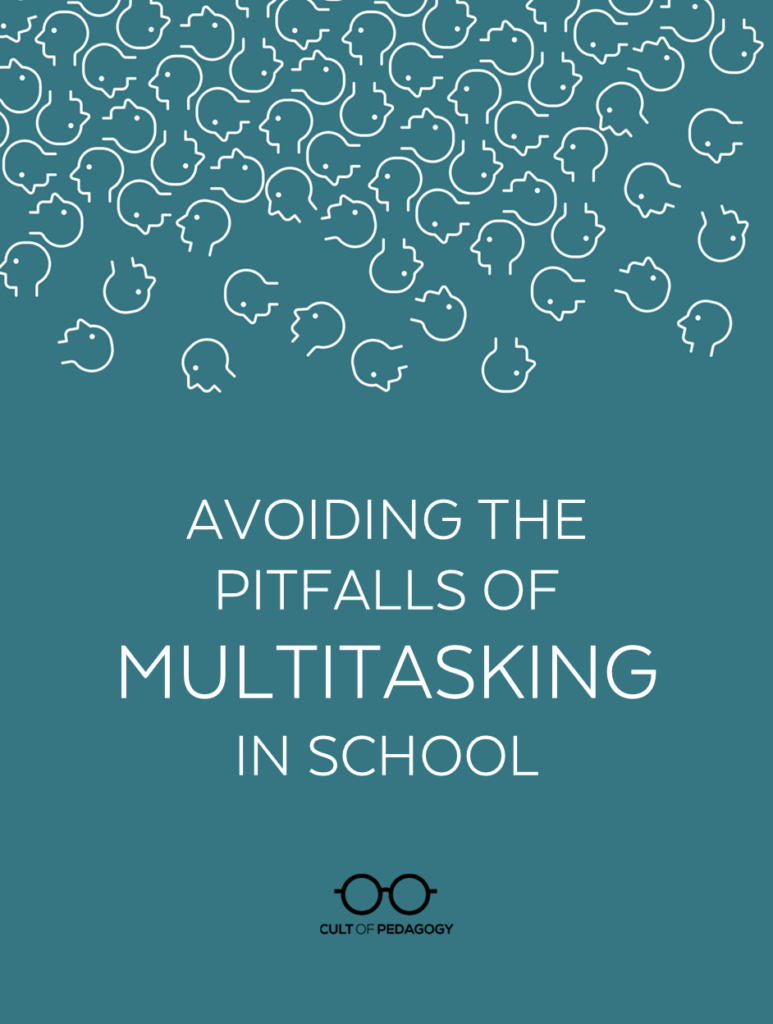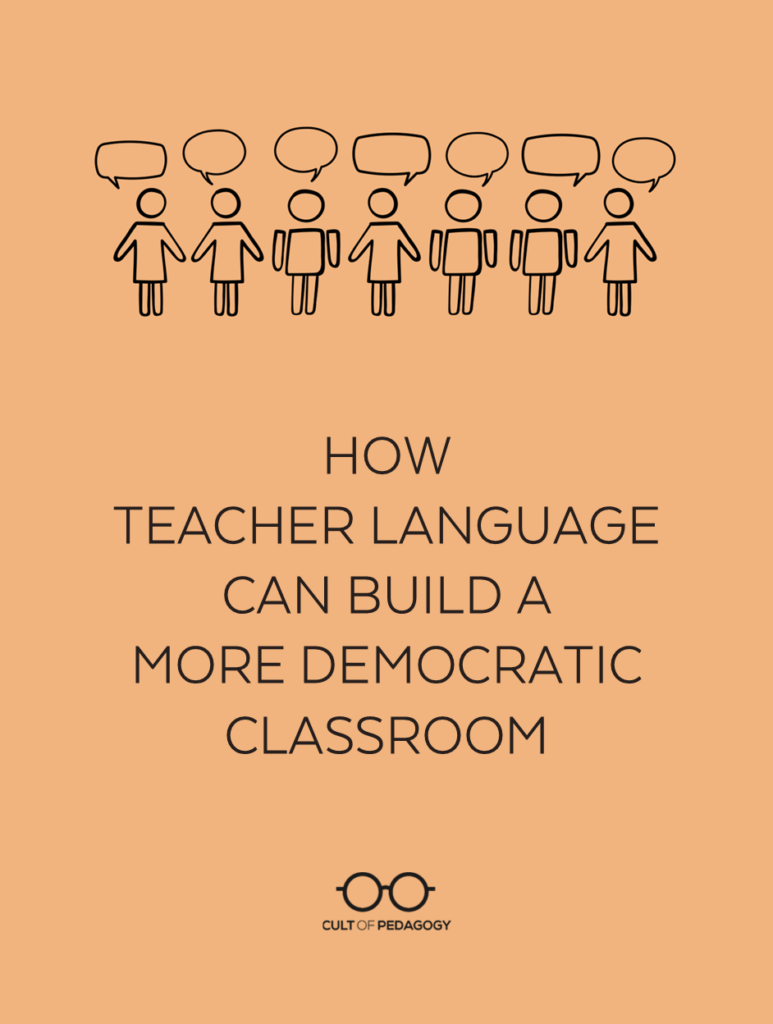When we make certain choices, often without even realizing it, we can turn a teaching moment from one that should be clear into one that's confusing. The post Three Ways You May Be Cognitively Overloading Your Students first appeared on Cult of Pedagogy.
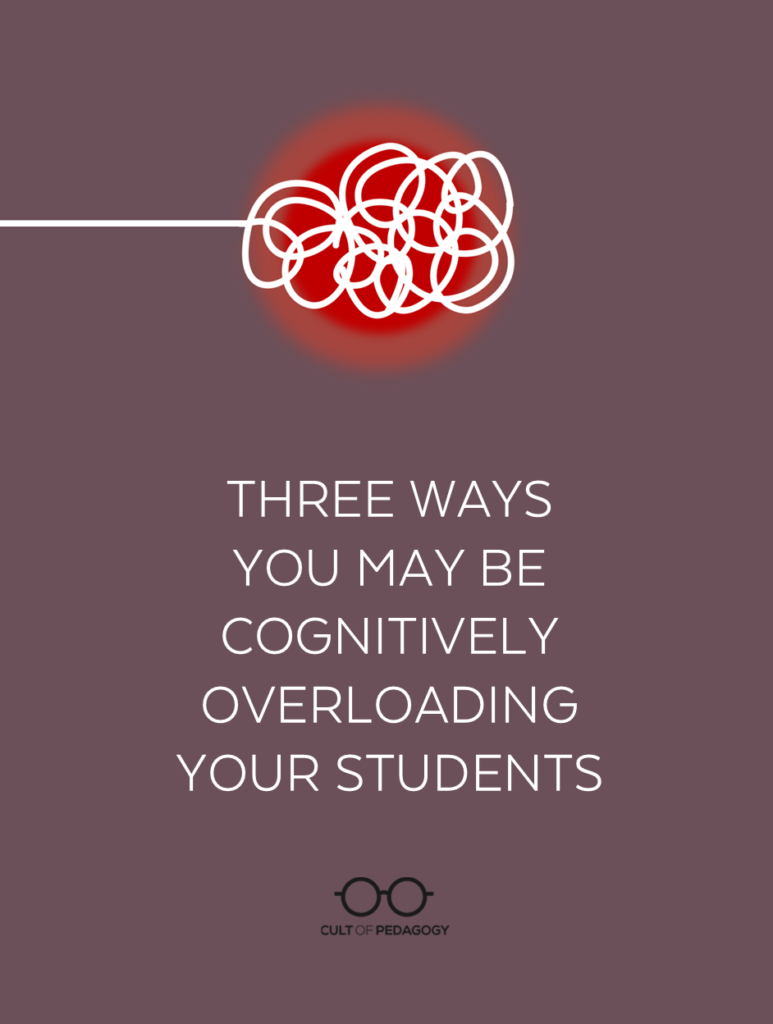
Listen to my interview with Blake Harvard (transcript):
Sponsored by Boclips Classroom and Brisk Teaching
This page contains Amazon Affiliate and Bookshop.org links. When you make a purchase through these links, Cult of Pedagogy gets a small percentage of the sale at no extra cost to you. What’s the difference between Amazon and Bookshop.org?
Sometimes it’s the smallest details that separate effective teaching from teaching that misses the mark. When we make certain choices, often without even realizing it, we can turn a teaching moment from one that should be clear into one that’s confusing. Luckily, these choices are pretty easy to spot and fix once we know what to look for, and cognitive science can help us understand what’s going on. Today we’re going to look at three of these. More specifically, we’ll be looking at three ways you might be creating cognitive overload for your students.
To talk about this on the podcast, I invited Blake Harvard, who you might know from episode 223 — Why Students Give You the Blank Stare — or from his website, The Effortful Educator. Blake is an AP psychology teacher, but he has also studied cognitive science on his own for close to a decade now and has turned a lot of that study into helpful resources about how to better align our teaching with how students learn.

This year, Blake has put what he’s learned into a new book, Do I Have Your Attention? Understanding Memory Constraints and Maximizing Learning (Amazon | Bookshop). On the podcast, Blake and I talked about three small things that many of us do in lessons that can cognitively overload our students. You can listen to the full interview or read the transcript above. The big ideas are summarized below.
How Classroom Lessons Affect Students’ Working Memory
“Our memory is limited,” Harvard begins. “There are constraints on memory, specifically working memory, which is whatever you’re thinking about right now — if I asked you what you had for breakfast, and you’re thinking about that, that’s in your working memory. Information that we don’t have in our long-term memory yet has to pass through that working memory. So when you’re teaching your students in class, and you’re talking about different concepts, ideas, terms, it’s going to enter that working memory. And working memory is extremely limited in how much stuff can fit in there, and it’s also limited in how long it stays in there. Information that enters your working memory will only stay in there for about 15 to 30 seconds. And either we kind of rehearse it and then it has a chance to move to long-term memory, or it doesn’t.”
Understanding this limitation on working memory can help teachers design more effective instruction. “Knowing that working memory is limited in capacity,” Harvard explains, “you’ve got to think about the intrinsic nature of the material, how complex it is, plus you’ve got to think about the extraneous load: How are you getting that information to them? We can quickly overload a student’s working memory or any person’s working memory if we’ve got this complex concept and we’re teaching it in a complex way also.”
One way to apply these concepts in your planning is to avoid three common teaching moves that tend to unnecessarily add to the extraneous load of a lesson. If you can spot these in your lessons and limit how often you do them, you’ll free up more space in students’ working memory so they can absorb the content you’re trying to teach.
Three Teaching Moves That Can Cause Cognitive Overload
1. The Seductive Details Effect
This happens when we add fun details or stories to our teaching that may be interesting, but don’t have a strong instructional connection to the thing we’re teaching. Doing this can fill up students’ working memory and leave less room for the essential stuff.
“If there’s a story that can bring a term or a really dry definition to life,” Harvard says, “and students can relate to it, that’s great. But if we’re just telling a story to tell a story, again, that working memory is limited. Do you want them to focus on the material that needs to be learned? Or the vacation your family had to the Grand Canyon that kind of tangentially relates to it but not really?
“I know why we do this as teachers, because we don’t want what we’re talking about to be boring. We want to make it interesting. And that’s great. I am certainly not saying don’t do that. but just make sure No. 1 that the stories you do tell, that it does relate directly to what they need to know and that you point out to students, like, tell the story then tell the students, Do you see how this relates to this concept? Make sure that they stay focused on the right things because students are more likely to latch on to your story and forget about the concept that it was based upon.”
2. The Split-Attention Effect
This happens when we present part of an idea in one place (like a diagram on one slide) and the other part in a separate place (the text explaining the diagram on a different slide). Separating these components requires students to do extra mental work to process them.
“What we want to do as much as possible in class is to create a situation where all the information the students need to understand a concept is right there,” Harvard says. “It’s in one place. Oftentimes what we do, especially with presentations, is we present part of an idea here, part of my idea on the next slide. Or we space it out in time. When we split their attention either spatially because it’s in different places or in a time manner, that creates a situation where it’s harder for us to learn it.”
3. The Redundancy Effect
This happens when we include information in more than one form (like giving students a handout but then explaining it verbally) when it could clearly be understood in the original form, forcing students to consume both when just one would be enough. “We can’t read something while also consciously paying attention to someone saying something to us,” Harvard says. “I can’t read a book and listen to someone tell me a story.”
Would this also apply to accessibility tools like closed captioning on videos or transcripts for podcasts? This question occurred to me after we finished our interview, so I asked Blake about this in a separate message, which I will paraphrase here. He acknowledged that while these tools would technically add extra load to working memory, the benefit from them would outweigh the cost of the extra load, so teachers should just keep that in mind when using them. I’m interpreting that to mean that features like these shouldn’t necessarily be always “on” for all students, but offered as options to students who would benefit from them.
A Rule of Thumb: Less is More
When I asked him to offer one general piece of advice to teachers based on what he has learned about the way the brain works, Harvard said, “When I think about designing my lessons, it’s kind of this mantra: Less is more and more is too much. I don’t know why, but I feel like as a teacher, the more complex, the more we get into something we’re teaching, we feel like we’ve got to jazz it up more. We’ve got to give more bells and whistles because this is so complicated. But when we think about the brain, that’s the absolute opposite of what we should be doing. The more complex it is, the simpler, the more stripped-down instruction needs to be. So less, from that standpoint, is more. Less is more learning. If you try to do more, that’s probably going to be too much.”
You can find more of Blake’s work on his website, The Effortful Educator.
Join our mailing list and get weekly tips, tools, and inspiration that will make your teaching more effective and fun. You’ll get access to our members-only library of free downloads, including 20 Ways to Cut Your Grading Time in Half, the e-booklet that has helped thousands of teachers save time on grading. Over 50,000 teachers have already joined—come on in.





